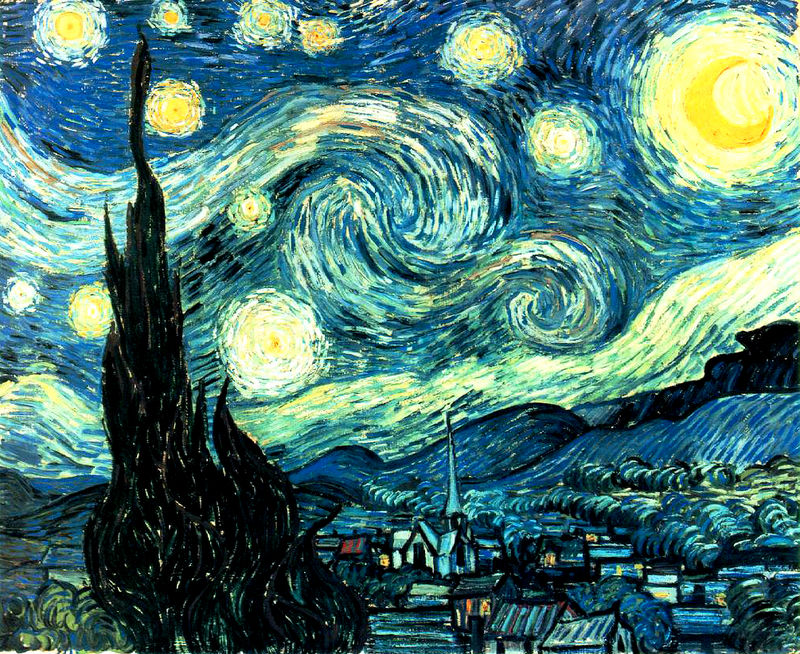Vincent van Gogh: The Artist and His Background
The Starry Night by Vincent van Gogh is a timeless masterpiece that has inspired and captivated viewers for centuries. Vincent van Gogh was a Dutch Post-Impressionist painter who lived from 1853 to 1890. He created The Starry Night in 1889 while living in the asylum of Saint-Paul-de-Mausole in the south of France (Ruzaidi 44). The painting is an oil on canvas currently housed in the Museum of Modern Art in New York City.

What makes The Starry Night art is its ability to evoke emotion from the viewer. The swirling brushstrokes create a sense of movement, and bright colors create a dreamlike atmosphere. There is a certain beauty and harmony in the painting that captures the imagination. The painting also has a deep meaning, as it speaks to Van Gogh’s struggles with his mental health.
The Post-Impressionist Era: Influence on The Starry Night
Van Gogh was one of the most influential and prolific painters of the 19th century. He was heavily influenced by the Impressionist and Post-Impressionist movements, which emphasized the importance of color and light in creating art. This is clearly evident in The Starry Night, which expresses van Gogh’s emotional and spiritual state at the time. In the painting, the night sky is filled with swirling stars and a crescent moon that is surrounded by a deep blue night sky (Van Gogh). The cypress trees in the foreground represent van Gogh’s longing for his home in Holland.
Analyzing The Starry Night: Techniques and Artistic Elements
The Starry Night is an oil on canvas painting that depicts a night scene over the village of Saint-Rémy. At the center of the painting is a church spire, which reaches up into the night sky and is bathed in a bright white light. The sky is illuminated by shining stars, which are painted in a swirling array of yellow, white, and blue (Ruzaidi 44). A few of the stars even appear to be shooting across the sky, adding to the feeling of movement and energy in the painting.
The painting is typical of the Post-Impressionism period, which was characterized by vivid colors and distorted perspectives. In The Starry Night, Van Gogh used pointillism, creating the sky and stars with tiny dots of paint. He also used a heavy impasto technique to make the textures of the sky, stars, and village (Ruzaidi 44). The Starry Night reflects Van Gogh’s troubled state of mind. He had suffered from mental illness for much of his life, and this is shown in the painting’s chaotic and distorted nature. It also depicts his deep faith and belief in the night sky’s beauty.
A Personal Connection: The Emotional Impact of The Starry Night
I was drawn to this artwork for its captivating beauty and the emotions it stirred. It also serves as a remarkable representation of Post-Impressionism. I have a personal connection with this painting, as I can relate to the struggles of mental health that Van Gogh faced. I have a strong bond with it as if it was crafted with me in mind. This work of art is admirable and astounds me because it shows how art can be used to express emotion and affect people in ways that no words can. As I gaze upon it, the significance of creativity and the potential of the human spirit become clearer. This painting is evidence that art can bring beauty, inspiration, and hope.
Works Cited
Ruzaidi, Aliah Hana. “Modern Art in Animation: Bringing Van Gogh’s ‘The Starry Night’ Alive.” Journal of Computing Technologies and Creative Content, vol. 7, no 1. 2022. Web.
van Gogh, Vincent. The Starry Night. 1889. Artble. Web.